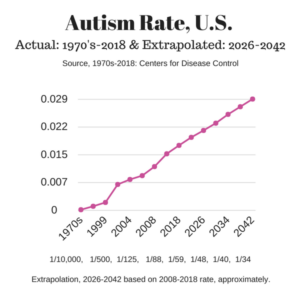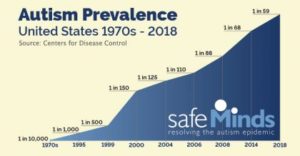I had a more complete ancestry.com genetic screening done and an independent (for research/personal use only) analysis of the raw data showed that I have an impaired ability to process drugs including olanzapine. (Note for new readers, I had a very bad reaction to that drug, and am not alone per some patient forum feedback by others who had trouble with it causing very bad mood changes when trying to stop using it. Get the genetic screening done first would be my strongly worded advice – suicide and homocide has been associated with withdrawal from the drug and it can cause diabetes and significant weight gain while using it.) https://www.snpedia.com/index.php/gs155
Additional reference for further discussion of the advances in the use of genetic screenings for medication risk is available in a book that is already slightly dated with the rapid advances in technology but as a starting point it is helpful for an overview on the history of technological advances in the area of medical care: The Creative Destruction of Medicine: How the Digital Revolution will Create Better Health Care, by Eric Topol, M.D., 2013. Basic Books. ISBN: 978-0465061839. (1) (“Book Review…,” and summary, by Jung A Kim, RN, PhD, PubMed_2)
One of the pioneers in personal genetic screening was Esther Dyson, a venture capitalist. She quoted a colleague regarding why she agreed to be one of the first ten participants in the Personal Genome Project:
“You would no more take a drug without knowing the relevant data from your genome than you would get a blood transfusion without knowing your blood type.” [128] (1)
The future of individualized health care will include genetic screening for everyone and what isn’t addressed in the book by cardiologist and translational research specialist Eric Topol, M.D. is the use of genetic screening for individualized nutrition guidance. In addition to discovering what medications may work better or be more dangerous for an individual genetic screening can target which types of exercise or diet plans may be more or less beneficial and which nutrients may need to be restricted or supplemented more than the average guidance.
My previous genetic screening was for fewer genes but which were chosen as most commonly a problem for children on the autism spectrum – I had 11 of the 30 and the guidance led to supplements and diet changes that have helped me feel better and have better mood stability – “Methylation Cycle Defects – in me, Genetic Screening For Research Purposes Only” – at this stage it is a legal phrase as genetic screening is not considered consistent enough for use as a diagnostic tool, but my personal health is of significant interest to me.
Chronic illnesses that I may be more prone to include inflammatory intestinal disease https://www.snpedia.com/index.php/rs2241880 and other autoimmune conditions and Type 1 diabetes. I may produce less insulin than average. https://www.snpedia.com/index.php/rs7574865
and suicidal ideation with depression and/or bipolar disorder. https://www.snpedia.com/index.php/rs10748045
I may have reduced MOAO activity which means reduced breakdown of brain neurotransmitters that affect mood. rs6323(T;T)
And reduced drug metabolism which could affect dosage of some immune suppressing and cancer treatment drugs. https://www.snpedia.com/index.php/rs1800460
A few areas may increase my risk of heart disease, especially with a high fat diet, and especially if stress-related, cortisol induced, https://www.snpedia.com/index.php/rs6318 and I may have increased risk for aortic or brain aneurysm (weak blood vessels bursting – lovely – but not really a surprise with my severe migraine history – it always felt like something was wrong with my blood vessels in one area of my brain that MRI showed I had “tortuous” twisted shaped vessels – okay – meditating calmly about all that, thanks.) https://www.snpedia.com/index.php/rs10757278
Heart attack/cardiac arrest is at increased risk if I also have hypertension (which I don’t – magnesium rich diets are associated with reduced risk of high blood pressure). https://www.snpedia.com/index.php/rs187238
while other genetic differences may decrease my heart disease risk; and vigorous exercise may be needed for me to be able to maintain a healthy weight. I may be able to lose weight easier on a low fat diet; and more likely to gain on a high saturated fat diet. https://www.snpedia.com/index.php/rs5082
Another is associated with increased obesity risk, there may be a disruption/decrease “loss of mitochondrial thermogenesis.” – in other words, inefficient energy production by the cellular structures that turn glucose sugar into usable energy. https://www.snpedia.com/index.php/rs1421085
It involves a protein that is an enzyme and is called more simply the FTO protein or more chemically, the – “alpha-ketoglutarate-dependent dioxygenase FTO is an enzyme that in humans is encoded by the FTO gene located on chromosome 16” – Wikipedia/FTO gene. FTO stands for Fat mass and obesity-associated protein. The protein is involved in demethylating DNA/RNA strands – which means it is involved in activating other genes. Methyl groups are an Oxygen-Hydrogen group, potentially one part of the water molecule when combined with one more Hydrogen, and when a DNA/RNA genetic strand is fully methylated in any potential bonding areas then the gene is inactive, methyl groups are a little like an off switch for the gene. So to not have the FTO enzyme I would be unable to turn some genes to the active/on phase. Clinical trials/observation of patients with the genetic difference found what was not turned off was the appetite, significantly more calories (125-280 Kcal) were eaten each day compared to control group subjects who didn’t have the difference. The difference is also associated with decreased verbal fluency, frontal lobe size and an increased risk for Alzheimer’s Disease. Wikipedia/FTO gene. What to do about it is not mentioned.
I do have genes associated with an increased childhood sensitivity to bitter flavors that may become as an adult, taste that is more accustomed to the flavor. https://www.snpedia.com/index.php/gs227
The screening does show a folate, B vitamin, difference similar to that found in a more specific genetic screening designed to reveal autism related differences that I had done with a different company a few years ago. The difference would increase my need for folate as my ability to process it may be only 10-20% of normal, and the lack of folate can increase the risk of excess build up of a chemical (homocysteine) associated with heart disease risk, especially if I was also low in B12 and B6. https://www.snpedia.com/index.php/rs1801133
I may have increased risk for breast cancer. rs2981582(C;T)
Genetic screenings are just a possibility, not a sure thing. I have a 99% likelihood of having blue eyes – but I don’t, I have green eyes. https://www.snpedia.com/index.php/rs12913832
Although I may have increased risk of scoliosis – which I do have a slight case of – https://www.snpedia.com/index.php/rs11190870
There is an increased chance that I’m optimistic and handle stress well – isn’t that swell? rs53576(G,G) (No link because this is a long file and it is starting to not respond, I am using a slow internet speed.)
“Normal (A2/A2) Better avoidance of errors. Normal OCD risk, normal Tardive Dyskinesia risk, lower ADHD risk. Less Alcohol dependence. Higher risk of Postoperative Nausea. Lower obesity. Bupropion is effective.” – Bupropion is a psychiatric medication that I did find helpful for years but eventually developed some side effects and stopped using it.
The genetic screening was done by ancestry.com and the raw data from the screening was processed independently (small fee) by the promethease.com website.
It may be clear that genetic screening is a complex topic and is for general health guidance rather than diagnostic purposes although the drug sensitivity information is used by medical professionals in some areas of treatment.
A couple other positive gene differences may provide me a better than average memory and muscle fibers that are better for moving fast – sprinting.
- Disclaimer: Opinions are my own and the information is provided for educational purposes within the guidelines of fair use. While I am a Registered Dietitian this information is not intended to provide individual health guidance. Please see a health professional for individual health care purposes.
- Eric Topol, M.D,, The Creative Destruction of Medicine: How the Digital Revolution will Create Better Health Care, 2013. Basic Books. ISBN: 978-0465061839. (1) Chapter 5, Biology: Sequencing the Genome, page 117: [128]
- Jung A Kim, RN, PhD, Book Review: The Creative Destruction of Medicine: How the Digital Revolution will Create Better Health Care, Health Inform Res. 2013 Sep; 19(3): 229–231. https://www.ncbi.nlm.nih.gov/pmc/articles/PMC3810531/ PubMed_2)
[128] Esther Dyson, “Full Disclosure,” Wall Street Journal, July 25, 2007, A15.





